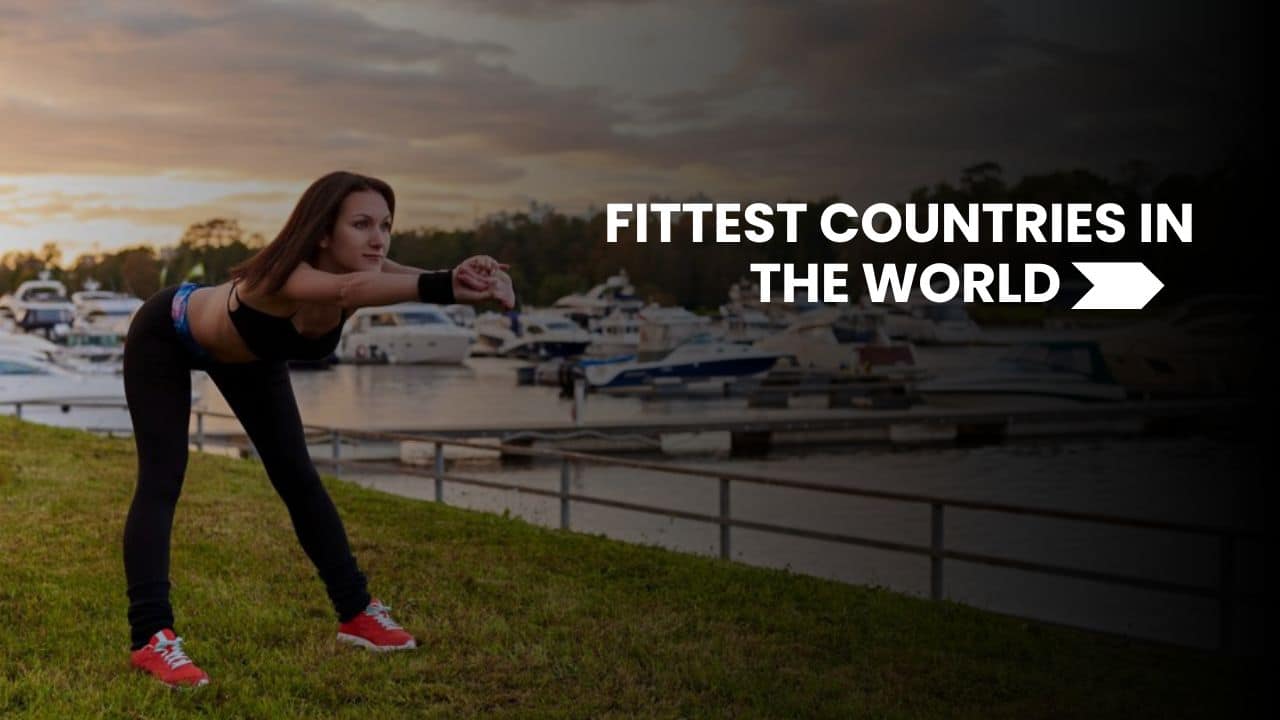Imagine a world where people live longer, feel better, and enjoy life to the fullest. Sounds like a dream, right? Well, for some countries, this dream is closer to reality. Welcome to our journey through the 10 fittest countries in the world!
In this article, we’re going to explore what makes these nations stand out in the global health arena. We’ll uncover their secrets to staying fit, eating well, and living long, happy lives. Whether you’re a fitness enthusiast, a health-conscious individual, or just curious about global wellness trends, this guide has something for everyone.
Get ready to be inspired by these health-conscious nations and discover tips you can use in your own life. Who knows? You might even find yourself booking a ticket to one of these fitness havens by the end of this read!
So, lace up your sneakers, grab a healthy snack, and let’s dive into the world of global fitness. It’s time to meet the champions of health and learn what makes them tick!
Key Health Indicators for the 10 Fittest Countries
Here’s an updated table with the latest available data on key health indicators for these countries:
| Country | Life Expectancy (years) | Obesity Rate (%) | Daily Steps (avg) | Healthcare Rank |
|---|---|---|---|---|
| Netherlands | 82.1 | 20.4 | 5,905 | 7 |
| Switzerland | 83.8 | 19.5 | 5,512 | 2 |
| Australia | 83.2 | 29.0 | 4,941 | 8 |
| Sweden | 82.7 | 20.6 | 5,863 | 5 |
| Japan | 84.3 | 4.3 | 6,010 | 3 |
| Denmark | 81.4 | 19.7 | 5,498 | 10 |
| Norway | 82.8 | 23.1 | 5,186 | 4 |
| Iceland | 82.9 | 21.9 | 5,764 | 6 |
| Finland | 81.9 | 22.2 | 5,204 | 9 |
| Canada | 82.3 | 29.4 | 4,819 | 14 |
1. Netherlands: The Cycling Paradise
When you think of the Netherlands, what comes to mind? Tulips, windmills, and… bicycles! That’s right, the Dutch have pedaled their way to the top of our fitness list.
Cycling Culture:
The Netherlands is famous for its cycling culture. In cities like Amsterdam, bicycles outnumber people! Here’s why cycling is so popular:
- Flat landscape: Perfect for easy rides
- Extensive bike lanes: Over 35,000 km of dedicated cycling paths
- Bike-friendly laws: Cyclists have the right of way in many situations
Dutch Diet:
But it’s not just about bikes. The Dutch diet plays a big role in their fitness:
- Hearty breakfasts: Often including whole grain bread and low-fat dairy
- Smaller portions: Lunch is typically a sandwich, not a full meal
- Moderation: The Dutch enjoy treats but in small amounts
Government Support:
The Dutch government actively promotes healthy living:
- Urban planning: Cities are designed to be walkable and bikeable
- Health education: Schools teach about nutrition and exercise from a young age
- Work-life balance: Many Dutch workers have flexible hours and shorter workweeks
2. Switzerland: Alpine Adventures and Precision Health
Switzerland isn’t just about chocolate and cheese. This Alpine nation takes fitness seriously, combining outdoor activities with a precise approach to health.
Mountain Lifestyle:
The Swiss Alps aren’t just for tourists. They’re a playground for locals:
- Hiking: There are over 65,000 km of marked hiking trails
- Skiing: Many Swiss ski from childhood, staying active even in winter
- Swimming: Lakes and outdoor pools are popular in summer
Swiss Diet:
The Swiss diet is a balance of traditional and modern:
- Muesli: A popular breakfast that’s both delicious and nutritious
- Quality over quantity: Swiss prefer high-quality, locally-sourced foods
- Fondue in moderation: Even indulgent dishes are enjoyed in small portions
Healthcare System:
Switzerland’s healthcare is world-renowned:
- Universal coverage: All residents must have basic health insurance
- Preventive care: Regular check-ups are encouraged and often covered
- High doctor-to-patient ratio: Ensures personalized care
3. Australia: Sun, Surf, and Sports
G’day, mate! Welcome to Australia, where fitness is a way of life and the great outdoors is everyone’s gym.
Beach Culture:
With over 10,000 beaches, Australians are never far from a natural fitness center:
- Surfing: A national pastime that’s great for fitness
- Beach volleyball: Popular on weekends and holidays
- Swimming: Many Aussies start their day with an ocean dip
Sports Obsession:
Australia’s love for sports goes beyond watching:
- Cricket: Played in backyards, parks, and professional stadiums
- Australian Rules Football: A high-intensity sport unique to Australia
- Running: Events like the City2Surf in Sydney attract thousands
Aussie Diet:
The Australian diet is as diverse as its population:
- Barbecues: Often featuring lean meats and seafood
- Fresh produce: Abundant due to Australia’s varied climate
- “Bush tucker”: Growing interest in native foods rich in nutrients
4. Sweden: The Nordic Fitness Model
Sweden proves that you don’t need constant sunshine to be one of the fittest nations. Their approach to health is as cool as their winters.
Outdoor Living:
Swedes embrace nature in all seasons:
- “Friluftsliv”: The concept of open-air living
- Cross-country skiing: Popular winter activity
- Foraging: Many Swedes collect berries and mushrooms for exercise and nutrition
Swedish Diet:
The Swedish diet is a model of balance:
- Smörgåsbord: A variety of small dishes, promoting moderation
- Fermented foods: Like pickled herring, good for gut health
- Whole grains: Rye bread is a staple
Work-Life Balance:
Sweden is famous for its approach to work and leisure:
- Long parental leave: Allows families time for active lifestyles
- “Fika”: Coffee breaks that reduce stress and promote social health
- Short working hours: More time for exercise and relaxation
5. Japan: Longevity Through Tradition and Innovation
Japan’s place on this list might surprise some, but this island nation has some of the longest life expectancies in the world.
Active Transportation:
Japanese cities are designed for walking and public transport:
- Walking: Many people walk to train stations daily
- Cycling: Bike-sharing systems are common in cities
- Stairs: Many choose stairs over escalators in stations
Traditional Diet:
The Japanese diet is often cited as one of the healthiest:
- Small portions: Using smaller plates and bowls
- Fish: High in omega-3 fatty acids
- Green tea: Rich in antioxidants
Wellness Culture:
Japan blends traditional and modern approaches to health:
- Onsen: Hot spring bathing for relaxation and health
- “Radio Taiso”: Morning exercises often done at workplaces
- Health tech: Advanced medical technology and health gadgets
6. Denmark: Hygge and Happiness
Denmark often tops lists of the world’s happiest countries. But did you know it’s also one of the fittest?
Cycling Capital:
Like their Dutch neighbors, Danes love their bikes:
- Bike superhighways: Long-distance cycling routes between cities
- Cargo bikes: Used for transporting kids and groceries
- Winter cycling: Bike lanes are plowed before car lanes in winter
Danish Diet:
The Danish approach to food is both traditional and innovative:
- Rye bread: High in fiber and a staple of Danish cuisine
- New Nordic Cuisine: Emphasizes local, seasonal ingredients
- Smaller portions: Quality over quantity is the Danish way
Work-Life Balance:
Danes prioritize life outside of work:
- 37-hour work week: Standard in many industries
- Generous vacation time: At least 5 weeks per year
- “Hygge”: The concept of coziness that promotes mental well-being
7. Norway: Friluftsliv and Fitness
Norway might be known for its fjords and northern lights, but it’s also a powerhouse of fitness and outdoor living.
Outdoor Lifestyle:
Norwegians have a special relationship with nature:
- “Friluftsliv”: The Norwegian concept of outdoor living
- Skiing: Both cross-country and downhill are national pastimes
- Hiking: The law allows people to roam freely in nature
Norwegian Diet:
The Norwegian diet is rich in nutrients:
- Salmon: High in omega-3 fatty acids
- Cloudberries: Packed with vitamin C
- Brown cheese: A unique Norwegian food high in calcium
Government Initiatives:
Norway invests heavily in public health:
- Free healthcare: Including preventive services
- Active transport: Incentives for walking and cycling to work
- Outdoor kindergartens: Many preschools focus on outdoor play
8. Iceland: Strength in the Land of Fire and Ice
Iceland might be small, but it’s mighty when it comes to fitness. This island nation has some unique approaches to staying healthy.
Geothermal Fitness:
Iceland’s natural hot springs play a big role in fitness:
- Public pools: Most towns have geothermal swimming pools
- Hot pot culture: Socializing in hot tubs is a national pastime
- Year-round swimming: Warm pools make swimming possible even in winter
Icelandic Diet:
The Icelandic diet is high in protein and omega-3s:
- Fish: A staple in most meals
- Skyr: A high-protein yogurt-like dairy product
- Lamb: Grass-fed and rich in nutrients
Strength Culture:
Icelanders are known for their strength:
- Strongman competitions: Popular both professionally and casually
- CrossFit: Iceland has the most CrossFit gyms per capita in the world
- Hiking: Challenging terrain makes for great natural workouts
9. Finland: Saunas and Sisu
Finland rounds out our Nordic nations, bringing its own unique flavor to global fitness.
Sauna Culture:
Saunas are more than relaxation in Finland:
- Daily habit: Many Finns use saunas almost every day
- Social activity: Saunas are places for socializing and relaxation
- Health benefits: Regular sauna use is linked to various health benefits
Finnish Diet:
The Finnish diet is hearty but healthy:
- Berries: Finland’s forests are rich in nutritious berries
- Rye bread: High in fiber and a staple food
- Fish: Both freshwater and saltwater fish are common
“Sisu” Mentality:
“Sisu” is a Finnish concept of determination and resilience:
- Outdoor activities: Finns stay active even in harsh winters
- Everyman’s rights: The freedom to roam encourages outdoor pursuits
- Work-life balance: Finns value leisure time for staying active
10. Canada: Fitness in the Great White North
Canada might be known for its politeness, but it’s also a nation of fitness enthusiasts.
Outdoor Adventures:
Canada’s vast wilderness is a natural gym:
- Hiking: With trails in 48 national parks
- Canoeing: A popular summer activity
- Ice skating: Many cities have outdoor rinks in winter
Canadian Diet:
The Canadian diet is diverse and generally healthy:
- Maple syrup: A natural sweetener rich in antioxidants
- Salmon: Both wild and farmed, rich in omega-3s
- Poutine: Even indulgent dishes are enjoyed in moderation
Healthcare and Education:
Canada invests in health at a national level:
- Universal healthcare: Ensures access to medical services
- Physical education: Mandatory in schools
- ParticipACTION: A national program promoting physical activity
Takeaway
These 10 countries show us what it takes to be fit and healthy. They prove that staying active, eating well, and having good healthcare can make a big difference. While every country is different, we can all learn from these examples.
Being fit isn’t just about looking good. It’s about feeling good and living a long, healthy life. These countries show that when people and governments work together, great things can happen for public health.
Remember, you don’t have to live in one of these countries to be fit. No matter where you are, you can make healthy choices. Eat well, stay active, and take care of yourself. These are lessons we can all learn from the world’s fittest countries.






































